



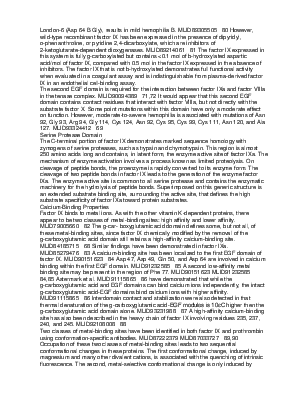
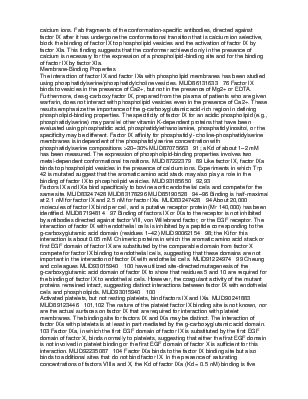
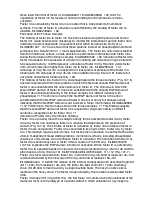
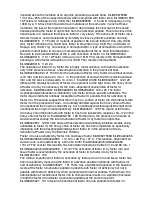
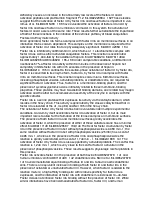
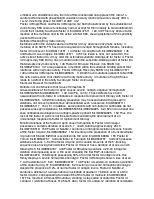
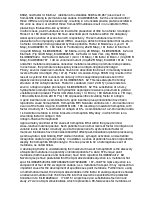
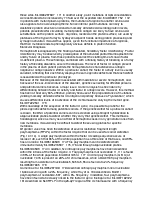
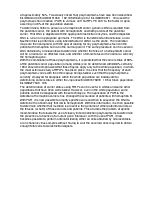
Chapter 107
Biochemistry of Factor IX and Molecular Biology of Hemophilia B
Steven A. Limentani and Bruce Furie
Introduction
Factor IX is a plasma protein with a molecular weight of 56,000 whose synthesis by the liver requires vitamin K. Factor IX participates in an intermediate phase of the blood coagulation pathway (see Ch. 100). It can be activated by factor XIa or factor VIIa complexed with tissue factor. In complex with factor VIIIa on membrane surfaces, factor IXa then activates factor X. The critical importance of factor IX is emphasized by the phenotype of hemophilia B, an hereditary disease characterized by factor IX deficiency.
In 1952 factor IX was discovered, distinct from factor VIII, in that after mixing two hemophiliac plasmas from unrelated patients, the clotting time of the mixed plasma was corrected. 1,2 Hemophilia B, or Christmas disease, is a sex-linked disorder defined by the congenital decrease in factor IX activity. The molecular defect causing factor IX deficiency in the index patient has recently been shown to be a point mutation causing a change from Cys 206 to serine in the catalytic domain. MLID92311856 3 Hemophilia B accounts for about 12% of the total cases of hemophilia. The disease is variable in phenotype, and the degree of bleeding severity usually correlates with the level of factor IX activity present in the patient's plasma. As anticipated from the variable phenotypes of hemophilia B and the similarity of phenotypes within each particular family, hemophilia B is caused by a variety of genetic defects. It is estimated that one-third of cases of hemophilia B arise from spontaneous mutations.
Gene Structure and Regulation
The factor IX gene is 34 kb in size, but only a limited amount of this DNA encodes the factor IX protein. The gene contains seven introns that range in size from 188 nucleotides to almost 10 kb. MLID86000558 4 The gene is located on the tip of the long arm of the X chromosome at Xq26-27.3, close to the factor VIII gene. MLID84119514 5 The cDNA consists of a 2.8 kb-open reading frame, coding for a 461-amino acid precursor protein. MLID82272386 MLID83065193 6,7 The protein is encoded by all eight exons (Fig. 107-1). The first, exon 1, codes for the signal peptide. The second, exon 2, codes for the propeptide and g-carboxyglutamic acid domain of factor IX. Exon 3 codes for the aromatic amino acid stack domain, a short linking segment common to all of the vitamin K-dependent proteins. Exons 4 and 5, separated by a large intron, each code for the two epidermal growth factor (EGF)-like domains of factor IX. Exon 6 codes for the activation domain of factor IX, while exons 7 and 8 code for the catalytic (serine protease) domain. The factor IX gene was derived ancestrally from a precursor of the prothrombin gene. MLID85270390 8 The genes for factor VII, factor X, and protein C share common splice junctions with the gene for factor IX, demonstrating the close relationship of the vitamin K-dependent proteins.
The regulation of the factor IX gene includes enhancer elements and an androgen-sensitive region. TATA boxes have been proposed at –27, MLID84236100 9 –187, MLID90216746 10 –265, MLID86000558 11 and –411. MLID86000558 11 A CAAT box is located at –238. MLID90216746 10 A transcription initiation site has been defined at +1 MLID84236100 9 and a transcription start site at –150. MLID90216746 10 Reijnen et al., MLID91032015 12 using primer extension and SI nuclease mapping, have confirmed possible transcription initiation sites at +1, +4, and +30, but were unable to demonstrate a transcription initiation site at –150. Reverse direction promoter-like activity has been identified in the region between –800 and –750. MLID90216746 10 A silencer has been identified between –1,600 and –1,900 and may lie at –1,680 with the sequence CCTCTCCTA. MLID90216746 10
Factor IX Leyden is a form of hemophilia B characterized by a severe bleeding disorder during childhood; factor IX activity and antigen levels are <1%. 13 With the onset of puberty or with the administration of androgen therapy, MLID85249674 14 the factor IX levels rise to 30–60% of normal, and the hemophilia phenotype disappears (Fig. 107-2). The mutations in the genes of patients in various pedigrees with the factor IX Leyden phenotype are located at –21, –20, –6, +6, +8, and +13 of the transcriptional start site. MLID93313191 MLID88327116 MLID91167254 MLID89135004 15–19 An additional point mutation causing moderate hemophilia has been described in a 3-year-old patient at –5; the consequence of this mutation during adolescence is as yet unknown. MLID92128980 20 The point mutations that are the basis for hemophilia B Leyden have served to increase understanding of the 5' regulatory region of the factor IX gene. A binding site for the CCAAT/enhancer binding protein (C/EBP) between +1 and +18 has been identified. MLID90259094 21 C/EBP binding is ablated by the mutation at +13, and protein expression is decreased by the mutation at –6. Furthermore, a binding site for nuclear factor-1 liver has been defined between –76 and –99. MLID90259094 21 A mutation at –20, –21, or –26 led to the identification of a binding site for hepatic nuclear factor-4 (HNF-4) between –10 and –34. MLID93313191 MLID92335285 MLID92335882 15,22,23 In contrast to the factor IX Leyden phenotype, the mutation at –26 does not lead to correction of factor IX levels after puberty MLID92335882 23; an androgen-responsive element is located between –20 and –36. In normal individuals, factor IX levels increase from 80 U/dl to 99 U/dl after puberty, a change that is statistically significant. MLID93311342 24
Уважаемый посетитель!
Чтобы распечатать файл, скачайте его (в формате Word).
Ссылка на скачивание - внизу страницы.